Share
In medicine, errors can have devastating consequences
How we can learn from mistakes and improve the system
This article was submitted by a physician who went through CPSA’s complaints process and agreed to share their experience as a collective learning opportunity. It has been edited by CPSA for length and content. In the interest of patient privacy, we are not publishing identifying information about this physician.
Through a complaint directed to CPSA, I recently learned that I missed a significant abdominal finding on a CT angiogram scan I ordered to assess abdominal vascular perfusion patterns for breast reconstruction. This experience has been eye-opening and humbling, but also served as a reminder of the prevalence of medical error in general and the consequences for our patients.
Unfortunately, this case resulted in a secondary tumor site going unnoticed for several months, a long surgical procedure being performed under the assumption of good health and an adverse patient outcome. A similar case was recently published in Messenger, where a significant finding was missed on an echocardiogram. This suggests further discussion is needed to identify gaps in the sharing of information and opportunities to better the existing system and minimize the chances of such errors.
To err is human….
Alexander Pope astutely identified in his poem, An Essay on Criticism Part II, that human error is an eventuality. The goal of the medical profession should be to understand this and have processes in place to minimize the effects of such errors on patient care. Reports dating back to the turn of the 21st century have shed light on the pervasiveness and consequences of medical errors within modern healthcare systems (1) (2). Through adaptation of quality assurance and improvement strategies from industry, the medical profession has attempted to minimize error by introducing redundancies in areas identified as high-risk (e.g., surgical safety checklists in the operating rooms). These strategies have made major improvements in the overall quality of patient care and reduction in medical error. However, there are still gaps within our health delivery system that require further attention.
My patient was referred to my hospital-based outpatient clinic for a breast reconstruction consultation following a mastectomy for breast cancer. The initial consultation involved a detailed history and physical examination, as well as a thorough discussion of reconstructive options. From our discussions, she was cleared by her surgical and medical oncologists and was in good health. She returned for a second consultation a couple of months later with a decision to proceed with breast reconstruction surgery. We reviewed the procedure in detail and a CT angiogram was ordered to map out the perforating vessels to her abdominal wall for surgical planning. In reviewing her CT, I missed the very last line of the report which described an area of mucosal thickening in the background of diverticulosis, for which a sigmoidoscopy was recommended.
Even with this significant incidental finding, the report was faxed to my office without a phone call and was not copied to the patient’s family physician or oncologists. I am routinely called regarding abnormal microbiology results, pathology reports and bloodwork. This creates a direct line of communication to convey important results with significance to patient care. In the same vein, I believe that a similar “fail safe” mechanism should be in place for radiological reports documenting significant findings, especially if they are incidental or unexpected. A relatively recent article in Radiology Business discussed the issue of handling incidental findings from radiological investigations. The department of radiology at Penn State University Milton S. Hershey Medical Center found that incidental findings were being missed and were not always being conveyed to patients. As such, they instituted a “fail safe” program, using phone calls and letters to directly inform patients if follow-up investigations were required (3). A similar “fail safe” mechanism would have flagged the fact that the incidental finding of thickened sigmoid colon found on a study ordered for a completely unrelated reason required urgent follow-up, which would have led to the earlier identification of a second primary malignancy of bowel.
Missing the line at the end of the report was absolutely my own error. But there was also a system failure with lack of appropriate processes or safety nets in place to ensure the conveyance of pertinent information to the patient. Similar errors are undoubtedly occurring unchecked and as such, a careful review of current reporting practices is necessary.
As a result of missing this CT finding, we proceeded with a breast reconstruction procedure. The patient developed post-operative abdominal seromas, which required multiple drainages and eventual surgical debridement. A couple of months after I last saw her in follow-up, she developed obstructive bowel symptoms and it was at this point, approximately one year after her original CT scan, that she was diagnosed with metastatic adenocarcinoma with pathology favouring either a gastrointestinal or pancreatic biliary primary site. She passed away a couple of months later from a pulmonary embolus.
I reflect on this experience with a heavy heart. We, as medical professionals, truly care for the patients we treat, which makes these errors so difficult to deal with. We take these errors personally and internalize them, questioning our abilities and expertise. In medicine, unintentional mistakes can have devastating consequences. In a time when patient numbers are rapidly increasing and with it, physician burnout, medical errors are bound to increase. We need to build in safety nets for ourselves and our patients, redundancies within the system to prevent important information from falling through the gaps. For my part, I have revamped how investigation reports are dealt with in my office, having my Medical Office Assistant review the reports and highlight recommendations within the report for me to review, thereby creating my own safety net moving forward. Small alterations can bring about large change in patient care and safety.
Lastly, knowing that physicians, as human beings, will make unintentional errors, what is the best way to deal with them? Shaming, condemning and labelling physicians’ mistakes as unprofessional conduct isn’t constructive, nor will it prevent future mistakes. A cooperative and transparent approach is best and there should be a way to express remorse for the mistake made without fearing litigation. This would foster healthier and positive relationships between physicians and their patients. This approach seems simple but goes against the current grain and will require further thoughtful discussion to effect change.
I have used this experience to make constructive change within my practice to better my delivery of patient care. To my fellow health professional colleagues, we must be proactive and advocate for better system safety nets to bridge the gaps within our current system. And to my patient’s family, I express my deepest condolences and regret for my mistake.
Works Cited
- Institute of Medicine. Crossing the Quality Chasm: A New Health System for the 21st Washington, DC. : The National Academies Press, 2001.
- Institute of To err is human: Building a safer health system. Washington: National Academy of Sciences, 2000.
- Constance, How to Manage Incidental Findings: Today’s Radiologists Turn to a Mix of Society Guidelines and Trusting Their Instincts. Radiology Business News. [Online] Trimed media, November 20, 2017. https://www.radiologybusiness.com/topics/care-delivery/how-manage-incidental-findings-todays-radiologists-turn-mix-society-guidelines.


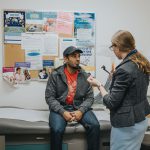






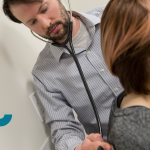



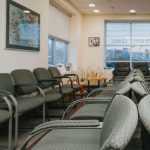

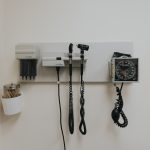





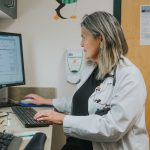


Comments for this post are now closed. If you would like to share your feedback on this topic, please email support@cpsa.ca.